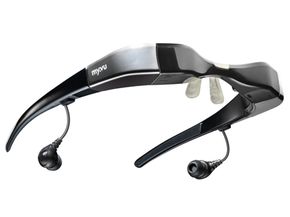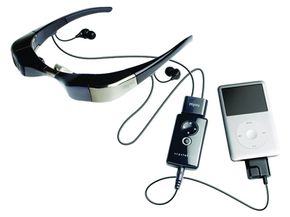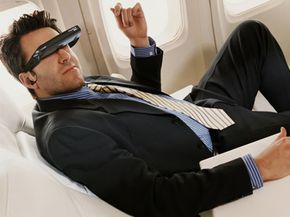As travel gadgets become increasingly portable and versatile, they also get more personal. Our cell phones, iPods and BlackBerry devices are like portals into our own private worlds of music, photo collections and e-mail accounts. When we use them, we usually forget about the surrounding world. But for those who covet privacy and seek personal refuge, these gadgets might not be enough. The people around you can still hear half of your cell phone conversation, and can you really trust the guy sitting beside you in the crowded airport terminal not to peek at your e-mails?
Advertisement
Short of finding a secluded corner or speaking in a whisper, there's another way to escape into your own world while you travel. Some developers have come out with video glasses that allow you to watch videos anywhere you go. Although they take advantage of the same principles of binocular vision (which we'll learn about later), these cutting-edge movie glasses aren't like the old, handheld View-Masters of your childhood. These video glasses offer hands-free convenience as well as a big-screen experience.
Video glasses aren't a new idea in the high-tech world, in which they've been known as a kind of head-mounted display (HMD). They're also called personal media viewers. No matter what you prefer to dub them, you can't deny that HMD technology has improved tremendously in the past couple decades. When first widely introduced to the market in the 1990s, consumers were underwhelmed with the results [source: Lubell]. In the form of bulky, ridiculous-looking helmets, such impractical novelty gadgets failed to entice buyers.
Today, they might be ready for a comeback. Modern video glasses usually take the form of relatively lightweight glasses. At first glance, some versions look like an average pair of sunglasses. Others have a more futuristic appearance that reminds many of the iconic eye-visor donned by the "Star Trek" character Geordi La Forge.
They all perform the same basic function, however. Next, we'll take a look at how these glasses display images.
Advertisement


